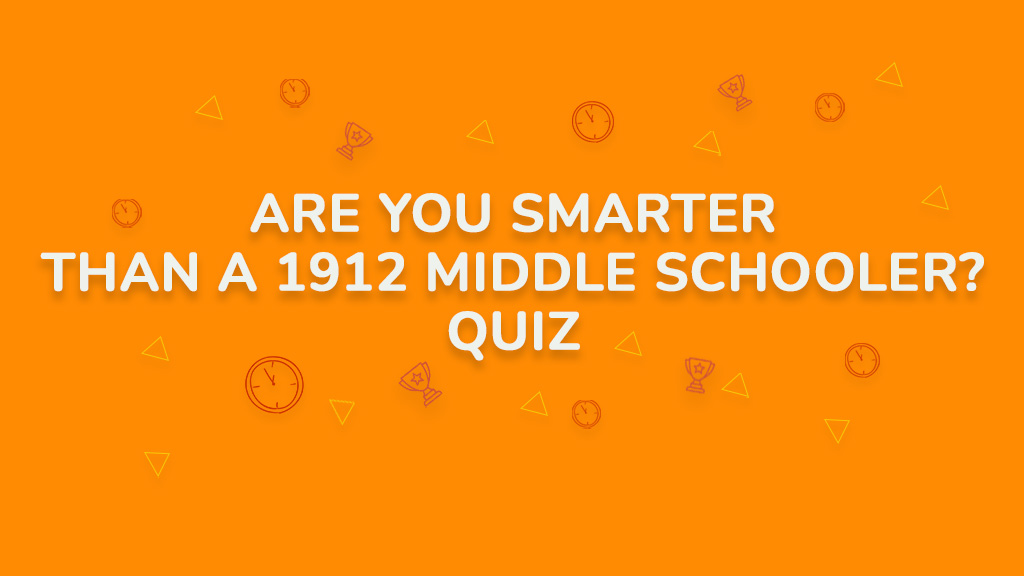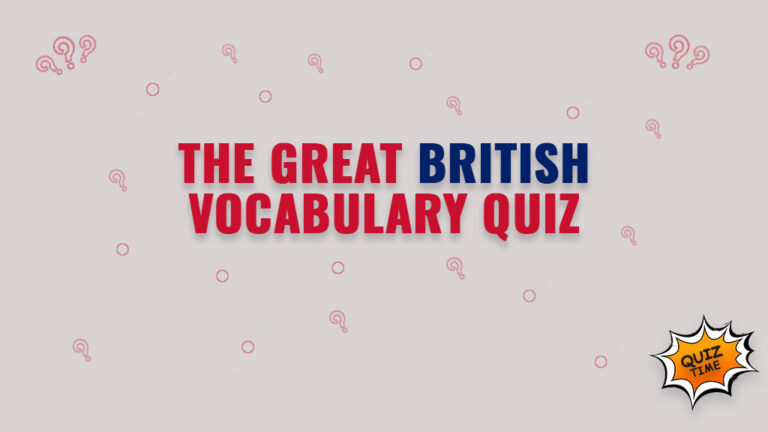❤️It's Trivia, but Sweeter❤️
Are You Smarter Than a 1912 Middle Schooler? Quiz

The following content explores a broad range of topics that a middle schooler in 1912 would be expected to know. These subjects include history, geography, mathematics, grammar, science, spelling, civics, literature, arithmetic, and health, reflecting the educational standards of the time. As we delve into each of these areas, we will observe how much knowledge a student in that era might have acquired compared to today’s standards.
History: The Foundations of the United States
In 1912, students were likely taught the foundational aspects of American history, particularly the story of the nation’s founding. One of the most important figures in American history is George Washington, who served as the first President of the United States. Known for his leadership during the Revolutionary War and his role in shaping the newly independent country, Washington’s influence is immeasurable. Students would have learned not only about Washington’s military strategies but also about his presidency, which set many precedents for the executive branch of government, such as the establishment of a Cabinet and the concept of a two-term limit for presidents.
The formation of the United States itself was a monumental event, and 1912 middle schoolers would have studied the American Revolution and the struggle for independence from Britain. The signing of the Declaration of Independence in 1776 was a pivotal moment, marking the beginning of a new nation built on ideals of freedom and democracy.
Geography: The World Around Us
Geography was another essential area of study, and while global awareness may have been more limited than it is today, students in 1912 would have had a solid understanding of key countries and their capitals. For instance, Paris, the capital of France, was not only a center of European culture but also a focal point in world affairs. France played a significant role in the history of the United States, particularly during the American Revolution, when the French provided crucial support to the colonial forces.
Learning about the capitals of various countries helped middle schoolers understand global politics and the layout of the world. Major cities like Paris were seen as cultural, intellectual, and political centers of influence. This knowledge would have been part of the broader study of geography, which often included map-reading skills and an understanding of physical features like rivers, mountains, and oceans.
Mathematics: Practical and Logical Thinking
Mathematics in 1912 was rooted in practical applications. Students would have been expected to learn basic arithmetic, such as addition, subtraction, multiplication, and division, with a focus on mental calculation and practical problem-solving. For example, a student might have been asked to calculate how many sheep remain after a certain number are lost, applying both subtraction and real-world context.
Additionally, middle schoolers in 1912 were introduced to more advanced concepts such as fractions, percentages, and word problems. While the curriculum was less expansive than today’s, students still received a solid grounding in the fundamentals of mathematical reasoning.
Grammar: Building Language Skills
Grammar instruction in 1912 emphasized the correct use of the English language in both written and spoken forms. Students would have studied the parts of speech, sentence structure, and punctuation, with an emphasis on clarity and precision. Verbs, for example, are an essential part of sentence construction, as they convey action and meaning.
Grammar lessons would have included diagramming sentences, a method that breaks down the components of a sentence to help students understand its structure. This practice encouraged a logical and analytical approach to language, ensuring that students could communicate effectively.
Science: Understanding the Natural World
In the early 20th century, science education was largely centered around the natural world. Middle schoolers in 1912 would have studied basic biology, physics, and chemistry, though the knowledge available at the time was not as advanced as it is today. For instance, students would have learned that water boils at 100°C (212°F) at sea level, a fundamental concept in chemistry that still holds true today.
Beyond boiling points, students would have been introduced to the basic principles of how the natural world functions. The study of animals, plants, and ecosystems would have been a key focus, with students also learning about the human body, including its organs and systems.
Spelling: Mastering the Written Word
Spelling was another critical aspect of a 1912 education. Students were expected to memorize the correct spelling of commonly used words, as well as more challenging words that required phonetic and etymological understanding. The importance of spelling extended beyond the classroom, as good spelling was seen as a sign of intelligence and attention to detail.
Words like “separate” could be tricky, given the irregularities in English spelling patterns, but mastering such words was a mark of a student’s academic progress. Even today, spelling continues to be a skill that is highly valued in both academic and professional settings.
Civics: The Role of Government and Citizenship
Civics education in 1912 emphasized the rights and responsibilities of citizens in a democratic republic. Students were taught about the Constitution of the United States, the Bill of Rights, and the structure of the federal government. They would have learned about the importance of the legislative, executive, and judicial branches and their roles in maintaining the balance of power.
Understanding the Constitution was fundamental, as it provided the legal framework for the country. The year 1912 was also a time when social and political changes were taking place, including the rise of the Progressive Era, which sought to address issues such as corruption and inequality. Students may have been exposed to these ideas as part of their civics education, helping them understand the importance of active participation in government.
Literature: Exploring the World of Words
Literature was an integral part of the 1912 curriculum, with an emphasis on classic works by authors like William Shakespeare. Students would have been introduced to plays such as Romeo and Juliet, learning about the themes of love, fate, and conflict. Shakespeare’s works have endured through the centuries because of their rich language and deep exploration of human emotions and relationships.
In addition to Shakespeare, middle schoolers in 1912 would have read works by other prominent authors such as Charles Dickens, Mark Twain, and Louisa May Alcott. These authors helped shape the literary canon and provided students with a window into different cultures, times, and perspectives.
Arithmetic: Practical Applications of Math
Arithmetic, as a practical subject, prepared students for everyday life. In 1912, students were expected to learn how to perform basic calculations efficiently, which was crucial for managing finances, making purchases, and navigating daily activities. The ability to multiply numbers quickly, for example, was a vital skill, as it enabled students to handle more complex problems in their personal and professional lives.
The multiplication of numbers, such as determining the product of 9 and 7, was a key part of arithmetic instruction. Mastering these calculations helped students build a strong mathematical foundation that they could apply to more advanced concepts as they progressed in their education.
Health: Understanding the Human Body
Health education in 1912 focused on the basics of human anatomy and hygiene. Students learned about the body’s various systems, such as the circulatory, respiratory, and digestive systems, and how they worked together to keep the body functioning properly.
The skin, as the largest organ in the body, was an essential topic in health education, as it protects the body from external elements and helps regulate temperature. Hygiene was also a major focus, with students being taught the importance of regular bathing, brushing teeth, and keeping wounds clean to prevent infection.
In conclusion, the knowledge expected of a middle schooler in 1912 was diverse and comprehensive. While some of the concepts may have been basic compared to today’s standards, they laid the groundwork for a well-rounded education. The subjects taught in 1912 were designed to help students understand the world around them, communicate effectively, think logically, and participate as informed citizens in society. These foundational skills remain relevant and valuable in today’s educational landscape.



